What is an AI BDR? A guide to AI-powered business development representatives
.png)
In outbound sales, time kills deals. That's why the rise of the AI BDR (Business Development Representative) is one of the most important (and misunderstood) trends in go-to-market tech.
Far from just fancy email generators, AI BDRs are emerging as full-spectrum pipeline builders: doing the research, drafting the messages, qualifying the leads, and setting meetings, at scale, 24/7.
This guide breaks down what AI BDRs are, how they fit into your sales motion, and which tools are leading the pack.
What does an AI BDR do?
An AI BDR is a software agent designed to take over many of the prospecting and lead engagement tasks that human BDRs traditionally handle. The best ones operate as autonomous systems, while others assist human reps with more efficient workflows.
Here are the core capabilities you can expect:
- Lead sourcing & enrichment: Identify prospects from internal and third-party data sources, and enrich with firmographic and intent data.
- Cold outreach: Generate and send email sequences, LinkedIn messages, or texts based on prospect data and buyer intent.
- Follow-ups & reminders: Automatically detect non-replies and send targeted follow-ups. Some tools even nudge human reps to jump in at the right time.
- Qualification: Score leads and ask qualifying questions, either by email or live chat.
- Scheduling & CRM updates: Book meetings, log conversations, and update your CRM without human intervention.
Some AI BDRs function like standalone reps. Others are more like assistants, enhancing the productivity of your human team.
Where AI BDRs Fit in the Sales Pipeline
AI BDRs are most impactful at the top of the funnel, during:
- Outbound prospecting
- Inbound lead follow-up
- Lead qualification and routing
The best systems know when to work solo and when to bring in human reps. For example:
- AI handles early cold outreach to large lists.
- It books meetings when a lead responds positively.
- A human BDR picks up the thread if the lead asks technical questions or signals high-value intent.
Think of AI BDRs as your never-tiring teammates who handle volume and repetition, so your human sellers can focus on strategy and closing.
The 6 Best AI BDR Tools Right Now
Let’s break down the top platforms powering this shift, starting with the most autonomous of them all.
- 11x: Fully autonomous platform with multichannel support via Email, LinkedIn, and Calendar. Best suited for teams seeking fully AI-run BDRs. Strengths include full pipeline automation, deep personalization, and CRM synchronization. Main limitation is the need to fully trust in automation.
- Lindy: Semi-autonomous agents supporting Email, Scheduling, and CRM. Ideal for teams wanting customizable AI assistants. Offers flexibility with custom agents, automated scheduling, and email negotiation. Limitation involves the need for setup and ongoing management of agents.
- Regie.ai: AI-assisted but human-operated, focusing on Email and Sequences. Best for sales teams looking for AI-generated playbooks. Strengths include prebuilt playbooks and personalization prompts. Limitation is lower autonomy, with content often needing manual editing.
- Apollo.io: Primarily manual with AI enrichment, operating through Email and Phone. Best for outbound teams that need extensive data and outreach capabilities. Strengths are a massive contact database and robust enrichment tools. Limitation is a reliance on manual workflows with only basic AI features.
- Outreach.io: Combines automation with human input, supporting Email, Phone, and Calendar. Suited for enterprise SDR teams requiring structured processes. Key strengths are advanced analytics, CRM integration, and multi-step workflows. Limitations include a steep learning curve and higher costs.
- Outplay: AI-enhanced sequences with multichannel outreach through Email, SMS, LinkedIn, and Chat. Tailored for lean teams using diverse outreach methods. Strengths are dynamic outreach, integrated GPT features, and affordability. Limitations include lighter analytics and AI features that can feel like secondary add-ons.
1. 11x

11x builds AI-powered digital workers like Alice (Outbound SDR) and Julian (Inbound Rep) that operate as fully autonomous BDRs. These aren’t just tooling layers; they function like employees, handling outreach, qualification, objections, and meeting booking.
Pros:
- Fully autonomous: no manual prompt chaining or monitoring needed.
- Integrates with CRMs, enrichment tools, and calendars.
- Learns your ICP, messaging, and tone over time.
- Handles complex workflows like re-engagement and inbound triage.
Cons:
- Best suited for orgs ready to trust AI with full-funnel execution.
- Less modular than traditional sales enablement tools.
2. Lindy
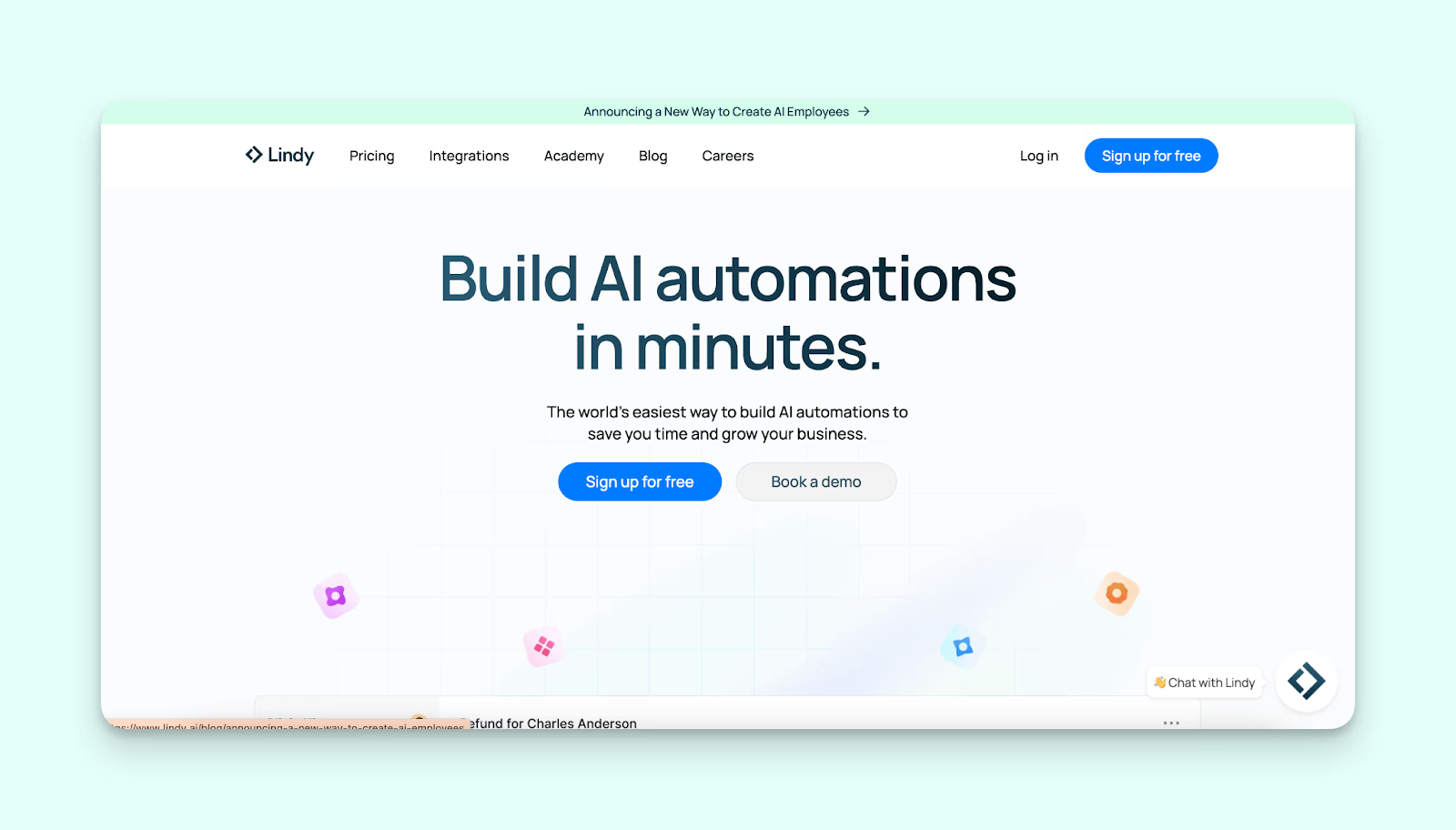
Lindy lets you deploy a squad of AI assistants (“Lindies”) that specialize in different sales functions. From prospecting to scheduling, these agents collaborate to automate a full outbound workflow.
Pros:
- The modular assistant structure makes it highly customizable.
- Automates follow-ups, scheduling, note-taking, and CRM updates.
- Built-in email negotiation and lead scoring.
- No coding required.
Cons:
- May require upfront configuration to assign workflows.
- Best used by technical teams comfortable managing multiple assistants.
3. Regie.ai
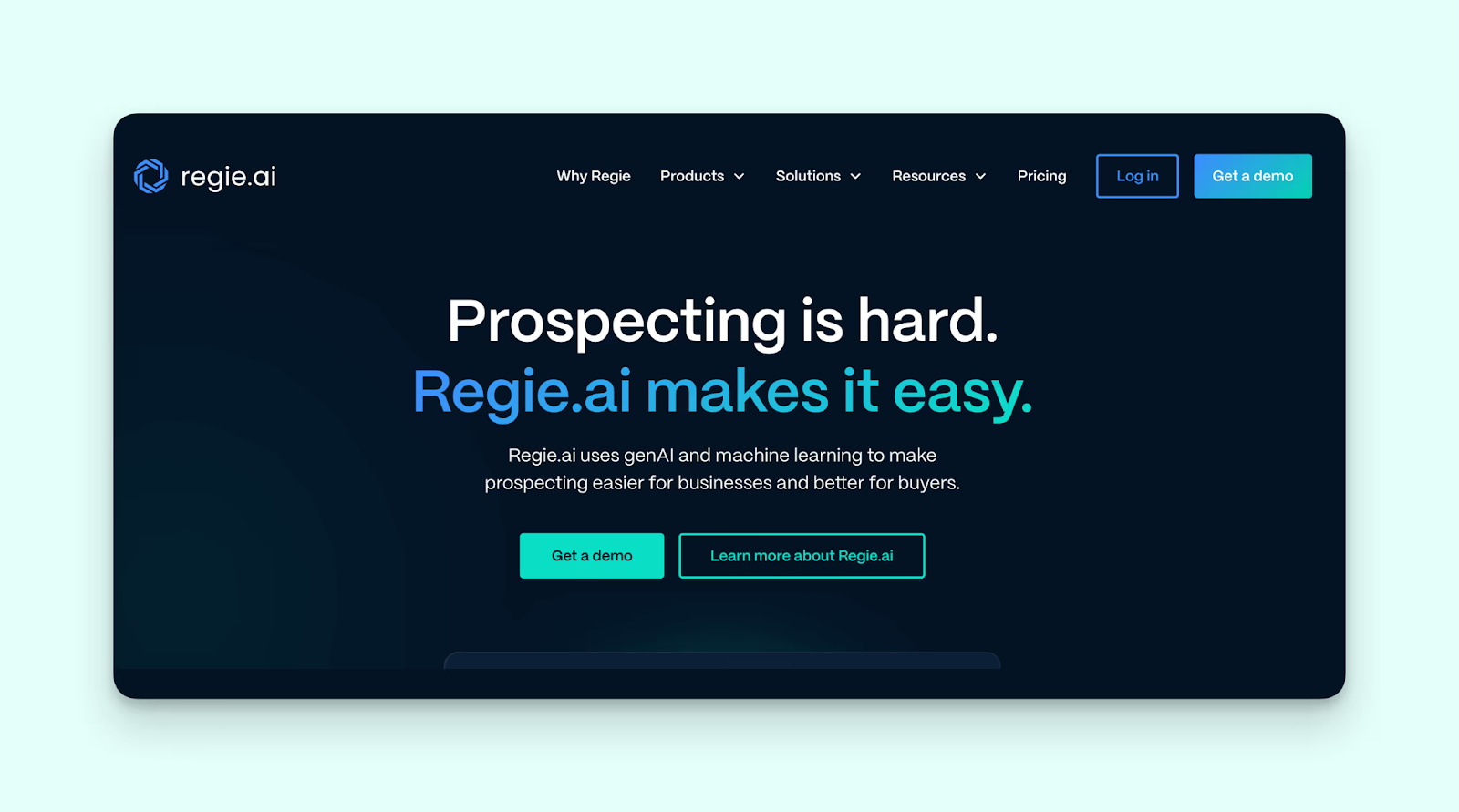
Regie is an AI-powered sales engagement tool that helps BDRs create personalized, scalable sequences. It includes playbooks, content generation, and analytics to optimize outreach.
Pros:
- Great for teams that want AI-assisted but human-operated workflows.
- Prebuilt playbooks streamline ramp time.
- Personalization prompts improve response rates.
Cons:
- Not fully autonomous—requires human monitoring and input.
- Some generated content may still need manual editing.
4. Apollo.io
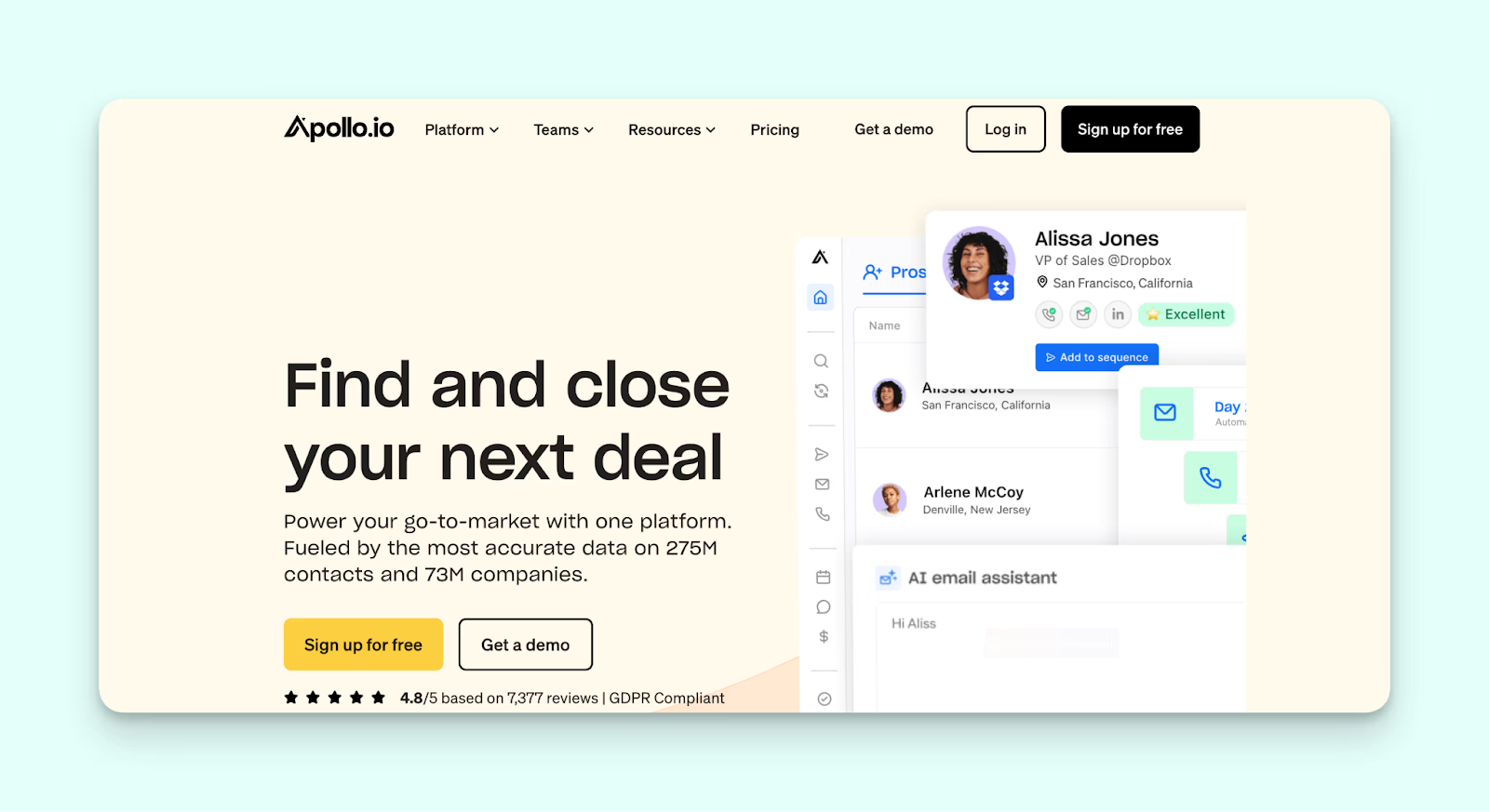
Apollo is a prospecting and engagement tool with a massive database and built-in enrichment. It’s ideal for finding contacts, qualifying them, and running outbound at scale.
Pros:
- Access to over 275M+ contacts.
- Strong enrichment and filtering tools.
- Budget-friendly with a free version available.
Cons:
- Lacks advanced automation or AI follow-up logic.
- Requires manual list management and sequence creation.
5. Outreach.io
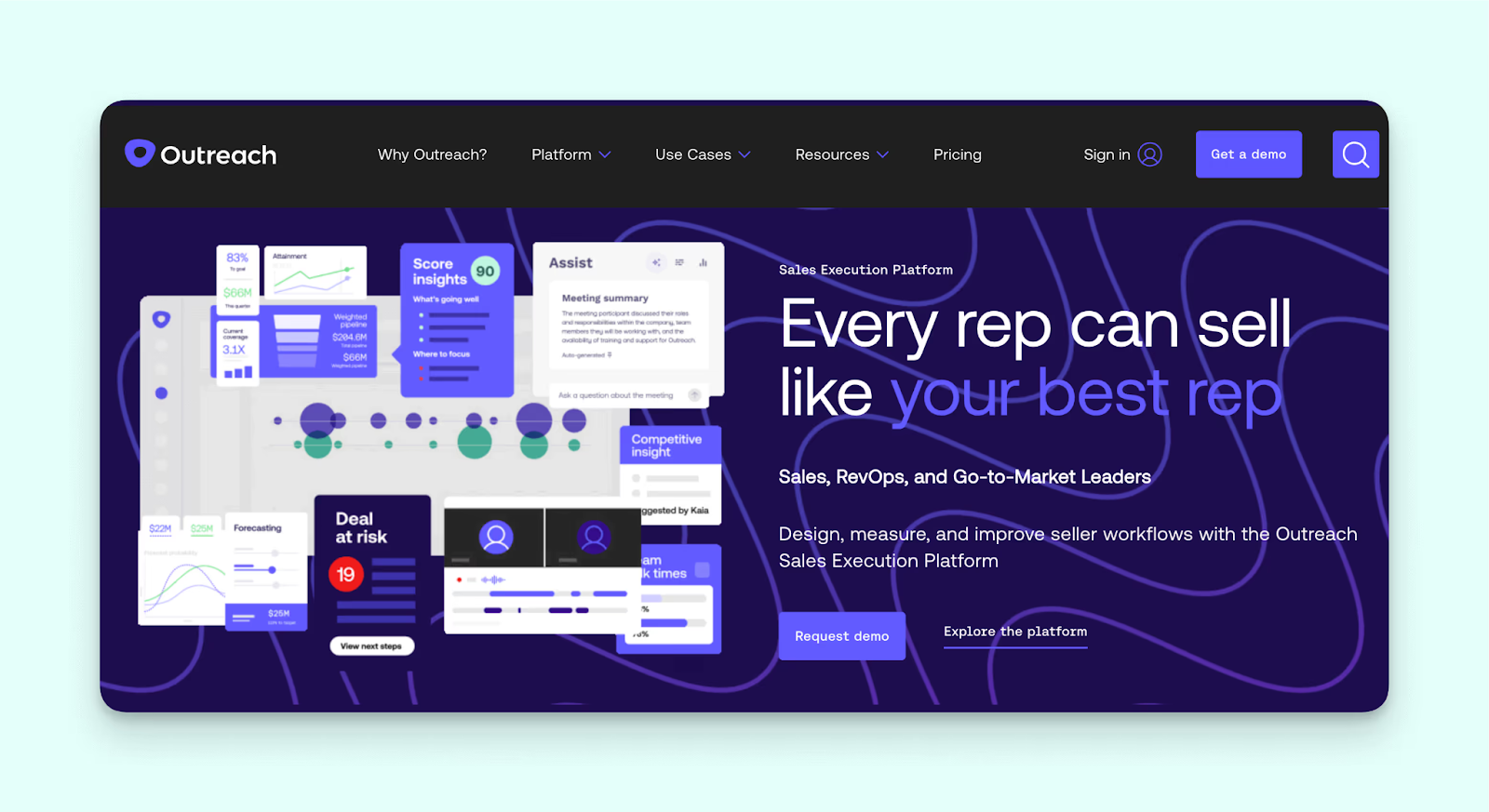
Outreach.io is a sales engagement platform that automates outbound tasks like email sequences and call scheduling. It supports both inbound and outbound motions.
Pros:
- Well-established tool with CRM integrations.
- Helpful analytics and engagement tracking.
- Great for managing BDR workflows across teams.
Cons:
- Steep learning curve.
- Expensive at scale.
- Doesn’t operate autonomously.
6. Outplay
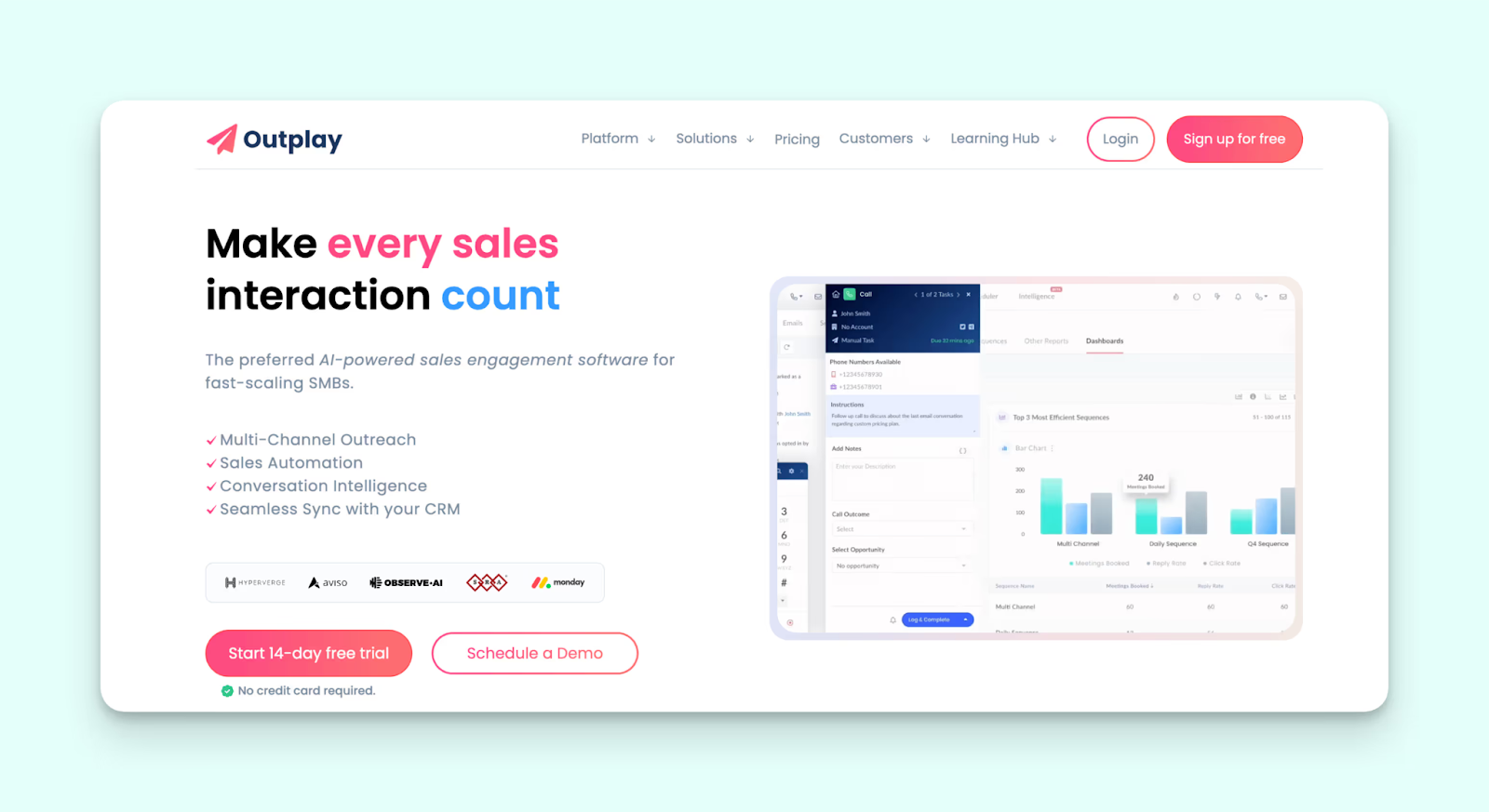
Outplay is a multichannel sales engagement platform with AI features like Magic Chat and Magic Mail. It enables BDRs to run campaigns across email, SMS, LinkedIn, and more.
Pros:
- Great for small to mid-sized teams.
- Dynamic sequences adjust based on prospect behavior.
- Affordable pricing with good customer support.
Cons:
- Some AI features feel more like add-ons.
- Analytics are lighter than enterprise-grade tools.
How to choose the right AI BDR for your team
Not all AI BDRs are created equal. Here’s how to think about selection:
1. Team Size & Sales Motion
- Solo founder or lean team? Go with an autonomous platform like 11x.
- Scaling SDR team? Consider Regie or Apollo to boost efficiency.
2. Workflow Complexity
- Do you need multichannel outreach, meeting booking, and qualification? Tools like Lindy or 11x will shine.
3. Integration Needs
- Make sure your AI BDR syncs with your CRM, enrichment tools, and calendar.
4. Personalization vs. Speed
- If tone and voice matter more than volume, pick tools with strong personalization like Regie or Lindy.
- For pure throughput, go with 11x or Apollo.

The future of outbound is autonomous.
AI BDRs aren’t just helping reps do more. In many orgs, they are the reps—handling qualification, outreach, and scheduling without a human ever lifting a finger.
But not every tool delivers the same level of autonomy or intelligence. Whether you need a full-time AI teammate or a smarter way to scale human effort, choosing the right AI BDR platform can 10x your pipeline without 10x-ing your headcount.
The best time to start testing? Yesterday.
Book a demo with 11x and watch Alice qualify, follow up, and book meetings, without lifting a finger.


.png)
.png)